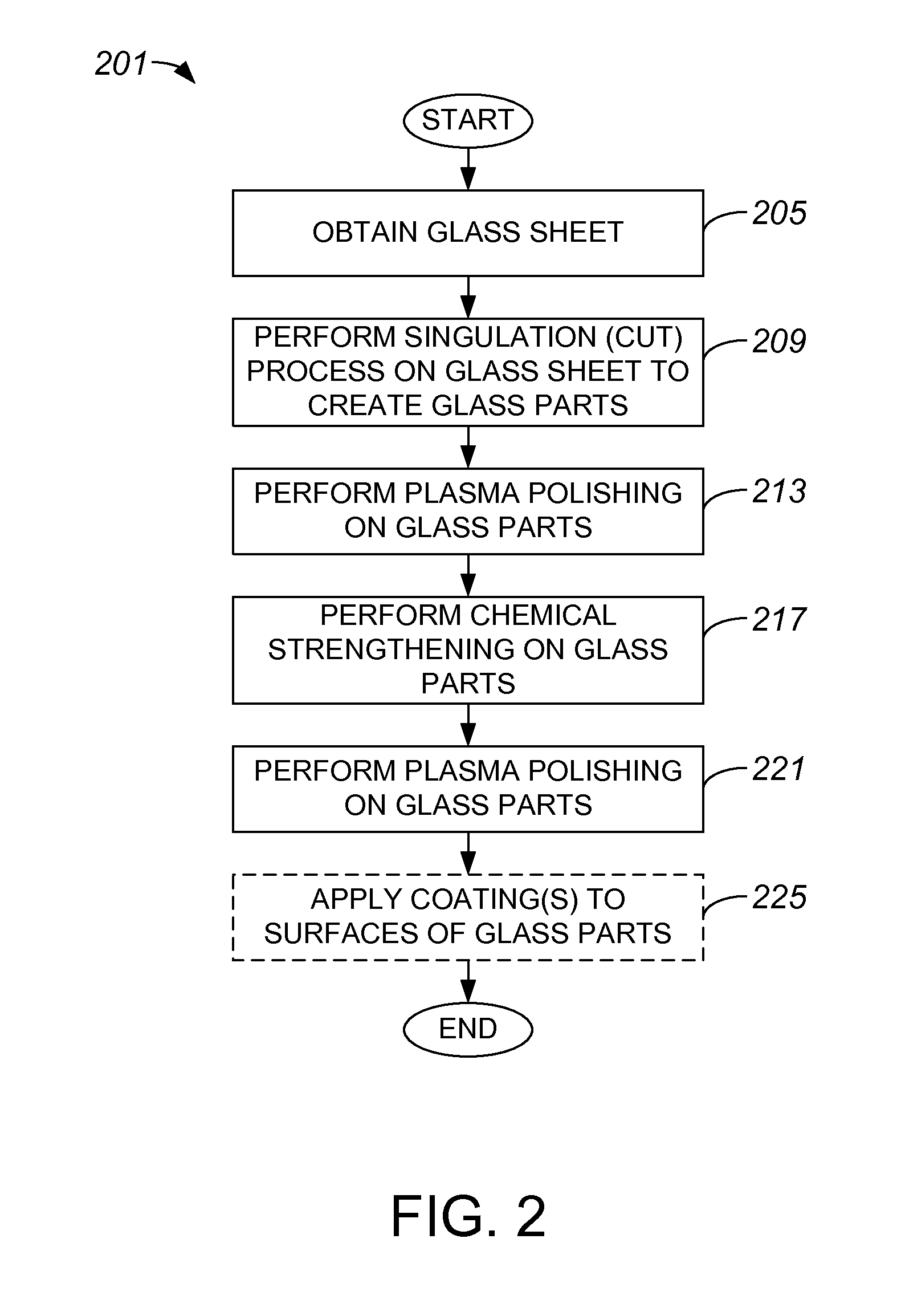Non-contact polishing techniques for reducing roughness on glass surfaces
- Summary
- Abstract
- Description
- Claims
- Application Information
AI Technical Summary
Benefits of technology
Problems solved by technology
Method used
Image
Examples
Embodiment Construction
[0024]The invention pertains to apparatus, systems and methods for polishing surfaces of glass members. The use of non-contact polishing methods, e.g., plasma polishing methods, allows for roughness on the surfaces of glass to be reduced while providing for relatively minimal removal of material from the surfaces. Plasma polishing methods may generally be used after a chemical strengthening process and / or may replace polishing processes which typically occur prior to the chemical strengthening process.
[0025]The apparatus, systems, and methods of the present invention allow for the formation of glass parts such as glass members that are suitable for glass covers assembled in small form factor electronic devices, such as handheld electronic devices, as for example mobile phones, media players, user input devices (e.g., mouse, touch sensitive devices), personal digital assistants, remote controls, etc. The apparatus, systems, and methods may also be used for glass covers or displays fo...
PUM
| Property | Measurement | Unit |
|---|---|---|
| Surface roughness | aaaaa | aaaaa |
| Surface roughness | aaaaa | aaaaa |
| Area | aaaaa | aaaaa |
Abstract
Description
Claims
Application Information
 Login to View More
Login to View More - Generate Ideas
- Intellectual Property
- Life Sciences
- Materials
- Tech Scout
- Unparalleled Data Quality
- Higher Quality Content
- 60% Fewer Hallucinations
Browse by: Latest US Patents, China's latest patents, Technical Efficacy Thesaurus, Application Domain, Technology Topic, Popular Technical Reports.
© 2025 PatSnap. All rights reserved.Legal|Privacy policy|Modern Slavery Act Transparency Statement|Sitemap|About US| Contact US: help@patsnap.com



